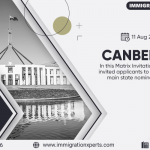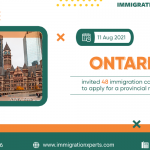
Good News for Indian Families Abroad: Canada Plans Easier Citizenship for Kids
- Canada is moving toward a significant update to its citizenship legislation, bringing long-awaited relief for thousands of Indian-origin families with children born overseas.
- Bill C-3 has officially received royal assent, putting Canada on track to roll out the revised citizenship framework.
- The reform eliminates the restrictive 2009 “second-generation cut-off” rule, broadening eligibility for foreign-born children of Canadian citizens.
- Citizenship will be reinstated for individuals previously excluded-often referred to as “lost Canadians.”
- A new “substantial connection requirement” will mandate 1,095 days of physical presence in Canada; full implementation is anticipated by January 2026.
Canada’s New Citizenship Law: A Major Boost for Overseas-Born Children of Indian Families
Canada is now set to introduce one of the most significant citizenship reforms in more than a decade. This change offers meaningful relief to thousands of Indian-origin families worldwide. The government is eliminating the long-criticized second-generation cut-off, a rule that prevented many Canadian citizens born abroad from passing citizenship to their foreign-born children.
With Bill C-3 now approved, Canada is close to activating this new, more inclusive system. Once the federal government confirms the start date, the revised law will finally allow overseas-born children of Canadian citizens—including Indian families—to gain citizenship through a clearer and more predictable process.
As a result, the reform restores rights for families previously excluded and aligns Canada’s citizenship system with the needs of globally mobile households.
Why This Update Matters for Indian-Origin Families
For years, the second-generation cut-off created challenges for Indian-origin professionals who frequently moved across countries for education and career growth. This law often forced families to choose between career mobility and securing citizenship for their children.
Understanding the Second-Generation Cut-Off Rule
Introduced in 2009, this rule restricted Canadian citizens born outside Canada from automatically passing citizenship to their children if those children were also born abroad. Consequently, many families experienced unnecessary stress, including:- Relocating to Canada solely for childbirth
- Going through complex immigration procedures for their own children
- Facing lengthy legal disputes and confusion
- Being classified as “lost Canadians” despite having legitimate ties to Canada
Understanding the New ‘Substantial Connection Test’
As Canada removes the second-generation restriction, it has introduced a safeguard to preserve meaningful ties to the country.What Does the Requirement Mean?
A Canadian citizen born abroad can pass citizenship to their foreign-born child if they can prove:- 1,095 cumulative days (3 years) of physical presence in Canada before the child’s birth or adoption.
Why This Benefits Indian-Origin Families
Many Indian professionals study, work, or build careers in Canada before moving abroad. Under the new rule, they have a clear and predictable pathway to pass citizenship to their children born overseas. Moreover, the test reduces confusion, speeds up processing, and minimizes legal disputes that Indian families often encountered.Key Benefits for Indian-Origin Families
The upcoming changes bring several advantages for Indian-origin families living around the world:-
A simpler citizenship pathway for overseas-born children
-
No need to return to Canada for childbirth
-
Citizenship restored for previously excluded children
-
Clear and predictable rules for the future
-
Greater stability and long-term benefits for children
Need Expert Help for Canada PR, Citizenship, or Visa Pathways?
Apical Immigration Experts-one of India’s leading immigration consultancies-offers step-by-step support for your Canada immigration journey.- Email: info@immigrationxperts.com
- Call us: +91-9999467686, +91-8447-696555





